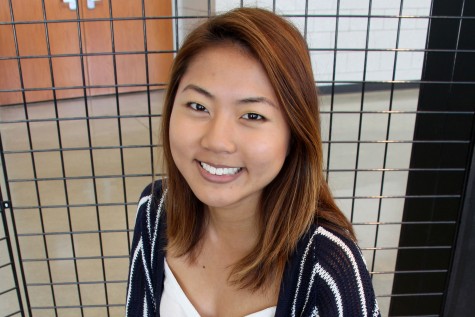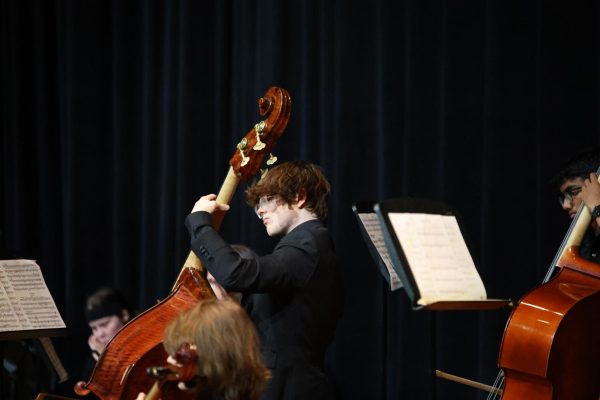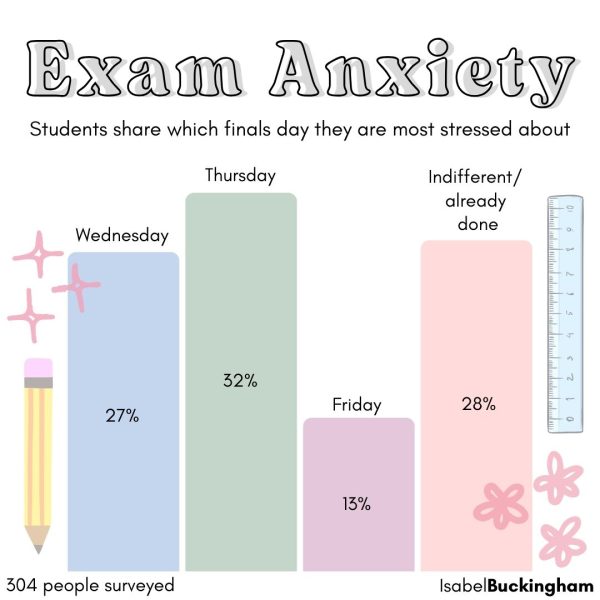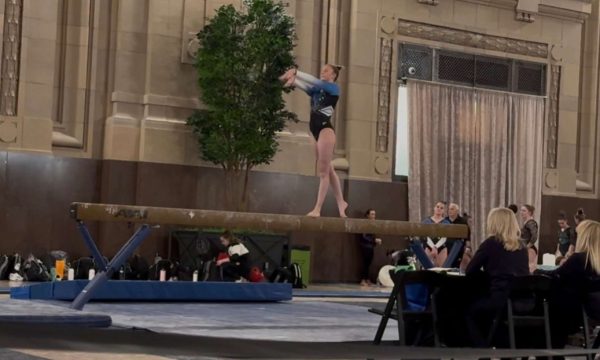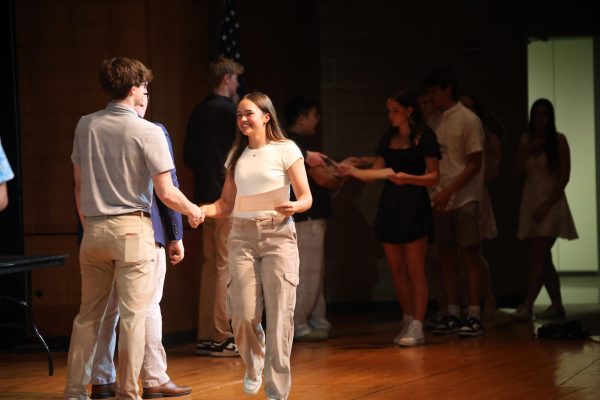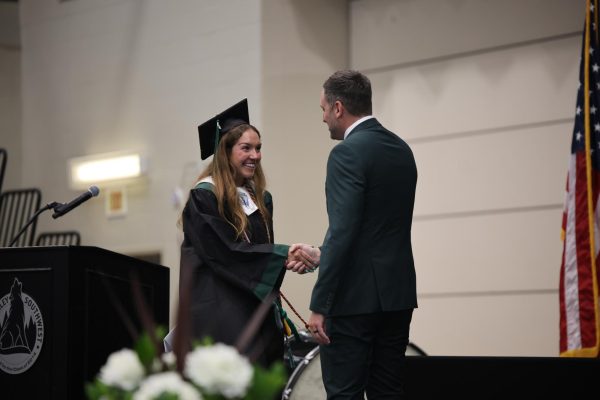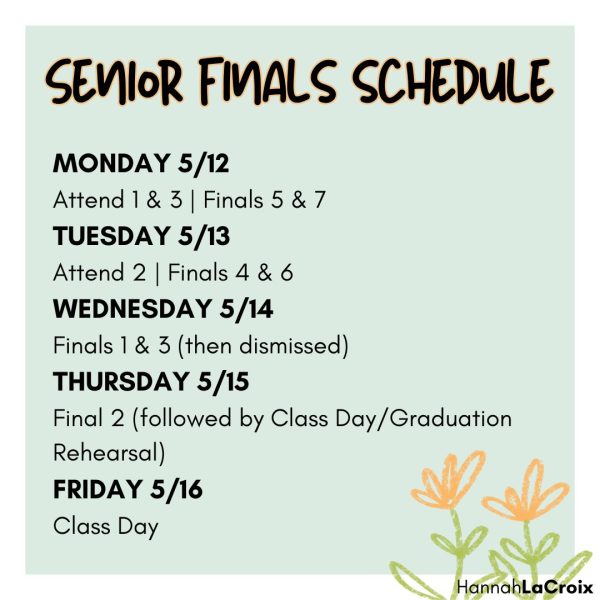Teachers use innovative ways to communicate with students
A photo of an angry Chihuahua appeared on students’ Twitter timelines over and over again, each time with a new caption. This became English teacher Shauna Rinearson’s first Twitter caption contest.
Every time a student would post a captioned version of the Chihuahua, Rinearson would favorite and retweet the post so she would be impartial to the contest. Then, at the end of the week, the student whose tweet received the most favorites from peers was the winner.
Teachers use innovative ways to connect with students and enhance their teaching outside of the classroom. As new modes of communication are introduced, the district tries to stay up-to-date with the best way of sending out information to the school community. Members are always seeking the most effective, efficient and professional ways to share information with students, staff and the school community, Executive Director of Human Resource Services for Blue Valley Schools Scott McWilliams said.
Rinearson utilizes social media to connect with her students, as well as connecting students with each other. Her caption contest became one way to encourage creativity and friendly competition among her students. One student who participated in Rinearson’s dog caption contest was junior Tara Dorsch.
“I think it’s really funny to see what students come up with,” Dorsch said. “I think [the contest] makes it seem like teachers aren’t just a figurehead. You can actually talk to them and be friends.”
Communication is key for teachers who want to keep students on top of their schoolwork. A few years ago, email was the most common mode of communication for students and teachers, but now, social media sites have taken its place. Social media is becoming a productivity tool, the same way that email did in the late 1990s; while email is great for one-on-one, formal correspondence, instant messaging and wikis allow for real-time communication and centralized information sharing, according to Forbes.
If a student has a quick question about an assignment for Rinearson, he or she can send a direct message via Twitter or a text to the students’ group message and get a quick response.
“I don’t mind texting students if it is school-related, like if somebody has a question about homework,” Rinearson said. “I really just have never run into a random student texting me individually and saying, ‘Hey, Rhino, what are you doing Saturday night?’ because, again, we have boundaries that we all respect, and I work with great kids who get it. I am in a group message with a bunch of girls, but, again, there’s a group, there so there’s transparency and it remains appropriate.”
Principal Scott Roberts agrees that with professional and appropriate use, social media can be a great tool in the education system.
According to the Association for Supervision and Curriculum Development, 61 percent of teachers, principals, and librarians are active in at least one social media space. At first, Roberts was apprehensive about joining Twitter, but now, he wishes he had joined earlier. For him, Twitter is a way to catch up on world news, connect with people and show the school’s accomplishments.
“I think it can be an effective tool if a teacher sends out an assignment, and everyone’s following that teacher,” Roberts said. “I know Mr. Pendleton does a lot of this. [He can tweet], ‘Here’s a link — go check out this podcast,’ and for someone who’s busy, I think it can be really effective.”
Social studies teacher Jason Pendleton uses podcasts to help students study for tests and has been doing so for about ten years. He records himself talking about the specific information that will be on the tests and tweets out the link to his podcasts, which can be accessed on students’ phones or computers.
“Not everybody learns the same way, and having an audio study review seemed to be beneficial,” Pendleton said. “So the year I began doing it, I saw student test scores for those who were listening rise about 15 percent higher than those who weren’t listening.”
Pendleton starting giving students this alternative way of learning to encourage them to study for their tests. For junior Cailee Traen, the podcasts work well to narrow her focus when studying.
“I think it’s really helpful because he goes right off of the test, so you have exactly what is going to be on it that you can study from,” Traen said. “I hate learning out of a textbook, so I think it’s a lot easier to review.”
According to Pew Research Center, nine out of 10 teenagers are on social media. Instructors are starting to use this medium to benefit students’ academic performance and to better understand students. Both Pendleton and Rinearson have realized that social media can benefit students’ learning experiences outside of the class period.
“I know that Mr. Roberts is supportive of anything that helps improve student performance — anything that creates a positive connection between teachers and students — fosters a better environment and leads to a more receptive school learning environment,” Pendleton said. “I think it’s a just a matter of us recognizing that this generation of students is so embedded within social media, so instead of fighting it, why not utilize something they’re already using to help them be successful?”
What Rinearson values most about social media is its power to connect people. In class, she may be able to connect a specific group of students, but through Twitter, she can connect all of her students as a grade level. Last year, before the AP exam, Rinearson filled timelines with tips and tricks for her students. Not only did she give academic help, but she also wanted her students to laugh and make sure they were relaxed.
“What I take seriously is not myself, certainly not my Twitter — anyone who’s seen it knows — but what I do take seriously is the idea of creating a sense of community within my students,” Rinearson said. “When we speak to each other less frequently face to face, I think the idea of perpetuating community within my students is really important. And I want that feeling of community to go beyond my silly Twitter contest and to go even beyond my classroom, but to become a part of your culture here at Blue Valley Southwest.”


